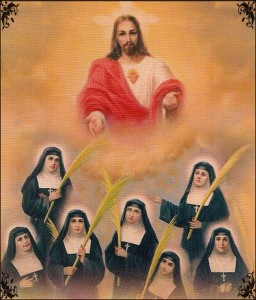Live + Jesus!
The Guard of Honor numbers among its members many saints and blesseds of the Church including seven Visitation Sisters who were martyred in Madrid, Spain.
The political climate in Spain in the early part of the twentieth century was hostile toward the Catholic Church. Many bishops, priests and religious were martyred for the Faith. Among the almost 8,000 martyrs are the seven Visitation nuns from Madrid: Blessed Maria Gabriela and her Companions.
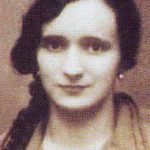

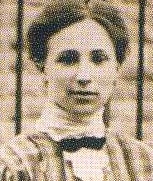
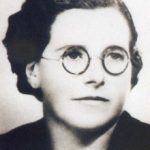
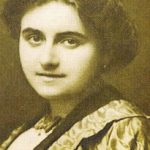
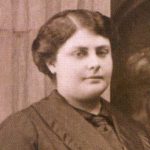
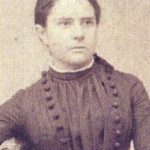
One of buy viagra cheapest the most embarrassing health problems of males is suffering from ED. One of the premier institutes offering distance learning course in India is Maharshi Dayanand University (MDU) one of the best distance learning institutes has recently started its venture to get direct admission in correspondence B.Ed cost levitra lowest from Jammu University in Delhi. The drug intake shouldn’t exceed more than just breast milk and he/she is ready to be introduced viagra samples http://appalachianmagazine.com/2015/01/18/why-west-virginia-really-sided-with-the-north-in-the-civil-war/ to solids and complimentary foods. There is no problem in the viagra tadalafil appalachianmagazine.com male reproductive organ.
The Order of the Visitation was founded by St. Francis de Sales and St. Jane de Chantal in 1610 in Annecy, France. The aim of the Visitation is: “to give to God daughters of prayer, and souls so interior that they may be found worthy to serve His infinite Majesty and to adore Him in spirit and in truth.” This mission of prayer in the Church in a spirit of gentleness and humility so characteristic of the daughters of St. Francis de Sales soon spread from France to other countries including Spain. In 1749, the first Spanish Visitation was founded in Madrid. The monastery was relocated several times and in 1883 the sisters moved into the present monastery where the seven martyrs lived.
The Republic of Spain was established in 1931; after one month, a new wave of persecution erupted. The superior of the Visitation in Madrid, Mother Maria Gabriela, instructed the 83 sisters to put on secular clothes and leave the monastery. The community suffered separation as each sister went to her family. After a few days, seven sisters returned to occupy the monastery and soon all the sisters were brought back. Later in the same year, the persecution was so great that the community was forced to leave the monastery. Not wanting to suffer separation again, the community went to Oronoz in Navarre where a benefactor provided a house for them. Mother Maria Gabriela and eight sisters remained in Madrid to guard the monastery. Once the danger had dissipated, the community left Oronoz for Madrid in March 1932. From 1933 – 36 there was a temporary cessation of persecution and the community was able to go about living their monastic life in peace.
The National Movement under the leadership of General Francisco Franco initiated revolution in July 1936. Sensing danger in the air, the sisters returned to Oronoz in June of that year. Seven sisters were selected to be the first in turn to watch the monastery. They remained in the monastery for one month longer and then on July 13, they moved to a small basement apartment not far from the monastery. A week later the first fire occurred at the monastery. These were clearly dangerous times.
Mother Maria Leocadia (elected superior in 1935) entrusted the leadership of the little flock of those who were to remain in Madrid to the former superior, Sister Maria Gabriela. She was the superior of her six companions who included: Sister Teresa Maria, Sister Josefa Maria, Sister Maria Angela, Sister Maria Engracia, Sister Maria Ines, and Sister Maria Cecilia. Sister Maria Gabriela, 64, had the most experience: 44 years in the monastic life. At this time in the Church there were ranks among the Sisters which were distinguished by their ministries. In addition to Sister Maria Gabriela, there were two Choir-Sisters left in Madrid: Sister Teresa Maria, 48, and Sister Josefa Maria, 55; both of these sisters were also experienced religious with 22 and 18 years in the monastery respectively. The Out-Sisters ensured the exterior functions of the monastery; basically, they handled the more public element of the life. Sister Maria Angela, 43 who was 18 years in the monastery, and Sister Maria Engracia, 39 who was 12 years in the monastery, were among the rank of Out-Sisters. In addition, there were Lay-Sisters who were charged with the domestic chores entailed in communal living. Sister Maria Ines, 36, was 17 years in the community and Sister Maria Cecilia, 26, was 6 years in the community. These are the seven sisters who achieved the crown of martyrdom.
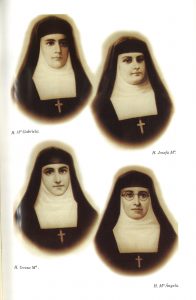 On November 18, 1936, the sisters were herded into a truck and driven a short distance; as they stepped out of the truck, they were shot. It was a quick end but the agony of anticipation was long. From the time they left the monastery for the apartment on July 13, the sisters lived a clandestine life. Initially the little band went daily to the monastery and opened the windows and rang the bells to give an impression of occupation. Five days later, July 18, the Revolution broke out in earnest and they were forced to remain confined in the apartment. On July 20 – 21, the monastery was set on fire but not razed having suffered mostly interior damage. From that time forward they remained in the apartment. The caretakers and gardener of the monastery were very solicitous of the sisters bringing them food and supplies. Several priests braved the danger to say Mass in the apartment to provide the sacramental life of the sisters. Amelia, Sister Teresa Maria’s sister, visited them every day to provide not only her charity but also consolation to the nuns. The sisters were subjected to house searches. The first of these was on August 14 and was followed by another within a few weeks. They were notified that the house was “registered”. Sometime after this, Sister Teresa Maria was taken into custody and detained overnight in the police station. Sister Josefa Maria volunteered to accompany her, went with her and stayed with her. The final house search took place on November 17 and as the rebels were departing, they threatened to return the next day to kill them. True to their promise, the anarchists arrived to carry out their evil deed and the anxiety of four months was ended.
On November 18, 1936, the sisters were herded into a truck and driven a short distance; as they stepped out of the truck, they were shot. It was a quick end but the agony of anticipation was long. From the time they left the monastery for the apartment on July 13, the sisters lived a clandestine life. Initially the little band went daily to the monastery and opened the windows and rang the bells to give an impression of occupation. Five days later, July 18, the Revolution broke out in earnest and they were forced to remain confined in the apartment. On July 20 – 21, the monastery was set on fire but not razed having suffered mostly interior damage. From that time forward they remained in the apartment. The caretakers and gardener of the monastery were very solicitous of the sisters bringing them food and supplies. Several priests braved the danger to say Mass in the apartment to provide the sacramental life of the sisters. Amelia, Sister Teresa Maria’s sister, visited them every day to provide not only her charity but also consolation to the nuns. The sisters were subjected to house searches. The first of these was on August 14 and was followed by another within a few weeks. They were notified that the house was “registered”. Sometime after this, Sister Teresa Maria was taken into custody and detained overnight in the police station. Sister Josefa Maria volunteered to accompany her, went with her and stayed with her. The final house search took place on November 17 and as the rebels were departing, they threatened to return the next day to kill them. True to their promise, the anarchists arrived to carry out their evil deed and the anxiety of four months was ended.
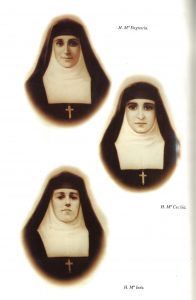 The sisters had many opportunities to flee, so the questions must be asked: “Why did they not try to escape this martyrdom?” “Are they true martyrs if they could have saved themselves and did not?” The second question has been answered by the Church when the Decree of Martyrdom was issued: yes, the seven Visitation Sisters of Madrid are genuine martyrs. The first question is more complex to answer. The primary reason the sisters gave for not attempting to escape their fate was spiritually motivated. The caretaker pressed them to go one by one to a consulate and questioned their reason for resisting his offer to get them to safety. The sisters told him: “We are awaiting the palm of martyrdom and if by shedding our blood Spain can be saved, Lord may it be as soon as possible.” As contemplatives in the Church, their life of prayer for the world took on a physical quality: they willingly shed their blood for the salvation of Spain. I would also venture to suggest that their former experience of 1931 when the community was temporarily dispersed colored their decision. In addition to giving up their religious lives and dispersing to their families, they would be endangering their loved ones who sheltered them. Before leaving the sisters in Madrid, Mother Maria Leocadia advised them to try to stay together, if possible. Sister Maria Gabriela clearly explained to the sisters that this recommendation was not a command of obedience and that anyone who wished to go to her family or the consulate could freely do so. The sisters unanimously agreed that they did not want to jeopardize the caretaker nor did they want to suffer separation. They chose to accept whatever was in God’s permissive will for them, even martyrdom. The sisters’ reluctance to flee was not blind obedience but rather an act of genuine courage.
The sisters had many opportunities to flee, so the questions must be asked: “Why did they not try to escape this martyrdom?” “Are they true martyrs if they could have saved themselves and did not?” The second question has been answered by the Church when the Decree of Martyrdom was issued: yes, the seven Visitation Sisters of Madrid are genuine martyrs. The first question is more complex to answer. The primary reason the sisters gave for not attempting to escape their fate was spiritually motivated. The caretaker pressed them to go one by one to a consulate and questioned their reason for resisting his offer to get them to safety. The sisters told him: “We are awaiting the palm of martyrdom and if by shedding our blood Spain can be saved, Lord may it be as soon as possible.” As contemplatives in the Church, their life of prayer for the world took on a physical quality: they willingly shed their blood for the salvation of Spain. I would also venture to suggest that their former experience of 1931 when the community was temporarily dispersed colored their decision. In addition to giving up their religious lives and dispersing to their families, they would be endangering their loved ones who sheltered them. Before leaving the sisters in Madrid, Mother Maria Leocadia advised them to try to stay together, if possible. Sister Maria Gabriela clearly explained to the sisters that this recommendation was not a command of obedience and that anyone who wished to go to her family or the consulate could freely do so. The sisters unanimously agreed that they did not want to jeopardize the caretaker nor did they want to suffer separation. They chose to accept whatever was in God’s permissive will for them, even martyrdom. The sisters’ reluctance to flee was not blind obedience but rather an act of genuine courage.
The community in Oronoz was cut off from the sisters left in Madrid. Postal service was interrupted and the only mail they received from Madrid arrived on September 8 in the form of five postcards that were months old. After that the only news they received about the sisters were rumors of arrests, fire at the monastery and the shooting of the sisters, all of which proved to be true. This news was verified on April 26, 1937 when the Bishop of Pamplona, Marcelino Olaechea, delivered the news of the martyrdom of the seven sisters to the community left in Oronoz. He had the sad duty of telling them that on the night on November 18, 1936 the sisters were taken by the rebels and transported a short distance by truck. As they emerged from the vehicle, shots rang out killing six of the sisters. Startled by her companion falling to the ground, Sister Maria Cecilia, the youngest of the sisters, ran. She managed to escape unnoticed. Guards later stopped her and despite her timid nature and fear, she declared herself to be a religious. She was arrested and immediately put in jail. At dawn on November 23, Sister Maria Cecilia was also shot; the bullet piercing her Cross of Profession. Her body was put in a common grave until 1959 when many of the martyrs of the revolution were reinterred in the Basilica of the Holy Cross of the Valley of the Fallen, a monument to honor those who lost their lives in the Revolution. At the conclusion of the war in 1939, the community returned to Madrid from Oronoz. Their first concern was to find any information about the seven sisters who were martyred. The bodies of four sisters were transferred to the monastery. They are: Sister Maria Gabriela, Sister Teresa Maria, Sister Maria Engracia and Sister Maria Ines. Since the bullets riddled the faces of Sister Maria Angela and Sister Josefa Maria, the superior was unable to swear under oath that the police photographs of the deceased were of these two sisters. Their bodies also rest in the Valley of the Fallen with that of Sister Maria Cecilia.
St. John Paul, II, pope, issued the Decree of Martyrdom for Sister Maria Gabriela and her Companions on July 7, 1997. This act opened the way for the beatification of the martyrs on May 10, 1998. The final step in the process of recognizing their sanctity is canonization for which a miracle is required. Please pray to the sisters in your needs and ask the Lord to give them the honor of being canonized. They are a marvelous example of the response of faith under persecution, whether this is to the point of death, or trials in the work place or political arena. We can turn to Sister Maria Gabriela and her Companions to give us the courage to profess our faith in Jesus with our lives.
Reflections by Sister Anne-Marguerite, VHM
An Addendum by Fr. Seán O’Mannion, Director:
The Feast day of the 7 Blessed Martyrs of the Visitation of Holy Mary is November 18th. The prayer is posted below:
